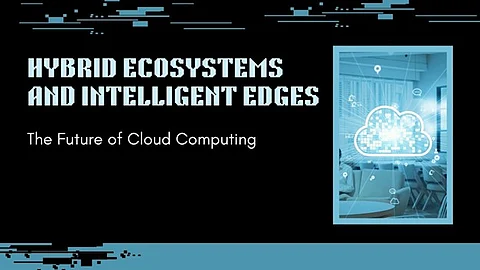

Today’s fast growing digital world, Cloud computing is on the cusp of a major transformation, marked by advancements in hybrid ecosystems, AI integration, and edge computing. Venkatakrishna Nukala explores how these innovations, alongside a rising emphasis on security and sustainable practices, are reshaping digital landscapes. From enhancing resilience through multi-cloud strategies to pushing real-time data processing to the network’s edge, these trends present both opportunities and challenges. As businesses adapt, they must navigate complexities with strategic agility to fully harness the benefits of this evolving technology landscape.
The cloud ecosystem is rapidly evolving into a complex architecture comprising hybrid and multi-cloud environments. Hybrid clouds merge public and private cloud advantages, facilitating the secure, scalable, and efficient allocation of workloads. The multi-cloud approach enhances resilience and cost efficiency, offering flexibility by distributing services across various cloud providers. However, this evolution introduces operational challenges, such as the intricacy of managing diverse platforms and ensuring data integration. Companies are investing in unified monitoring tools and building robust frameworks to mitigate these complexities.
Artificial Intelligence (AI) and Machine Learning (ML) are progressively embedded into cloud services, driving a new wave of operational advancements. AI's accessibility is expanding through automated tools and simplified platforms, democratizing these technologies for a broader audience. The anticipated improvements include customized AI hardware and sophisticated NLP solutions, setting the stage for real-time analytics and predictive capabilities. Businesses are capitalizing on these advancements to automate complex tasks, personalize user experiences, and enhance strategic decisions through precise, data-driven insights. However, challenges such as data privacy and the need for ethical AI practices remain significant considerations.
The surge in IoT devices and the demand for real-time processing are propelling the rise of edge computing. Unlike centralized data centers, edge computing processes data near its source, dramatically reducing latency and bandwidth usage. The symbiotic relationship between edge and cloud infrastructures is enhancing hierarchical data management, where initial processing occurs at the edge, with more intensive analytics reserved for the cloud. Applications range from autonomous vehicles to industrial automation, where instant data processing is critical. This architectural shift is redefining how industries implement intelligent, low-latency systems to optimize performance and reliability.
Cloud security is transforming to meet escalating cybersecurity challenges and regulatory demands. Advanced frameworks now incorporate AI-powered threat detection and Zero Trust architectures, while quantum-resistant encryption prepares systems for future threats. Organizations are leveraging automated compliance tools to navigate complex regulatory landscapes, with blockchain technology emerging as a solution for secure transactions. The shift to multi-cloud environments, while complex, is driving innovations in comprehensive security strategies that protect sensitive data across distributed systems.
Sustainability is reshaping cloud strategies, with a focus on minimizing environmental impact. Data centers, notorious for high energy consumption and emissions, are transitioning to renewable energy and adopting energy-efficient hardware. Innovations such as liquid cooling systems and AI-optimized workload distribution are helping reduce resource usage. The concept of carbon-aware computing is emerging, wherein workloads can be dynamically managed based on energy availability and environmental impact. Companies are also exploring biodegradable hardware to tackle the mounting e-waste problem, emphasizing a commitment to sustainable practices.
These advancements in cloud technology are leveling the playing field for businesses, especially small and medium-sized enterprises (SMEs). Cloud adoption can reduce infrastructure costs, enhance scalability, and improve collaboration through advanced digital tools. Yet, integrating cloud solutions requires overcoming hurdles like legacy system compatibility, data sovereignty, and the ongoing need for specialized skill sets. Organizations are encouraged to adopt phased migration strategies, invest in employee training, and prioritize comprehensive security measures to unlock cloud benefits effectively.
In conclusion, as Venkatakrishna Nukala outlines, the landscape of cloud computing from 2024 to 2034 is set to transform drastically. Hybrid and multi-cloud ecosystems will dominate, AI and edge computing will drive unprecedented efficiency, and sustainability will be a strategic imperative. Organizations ready to embrace these changes will be well-positioned to thrive in an increasingly digital world.
